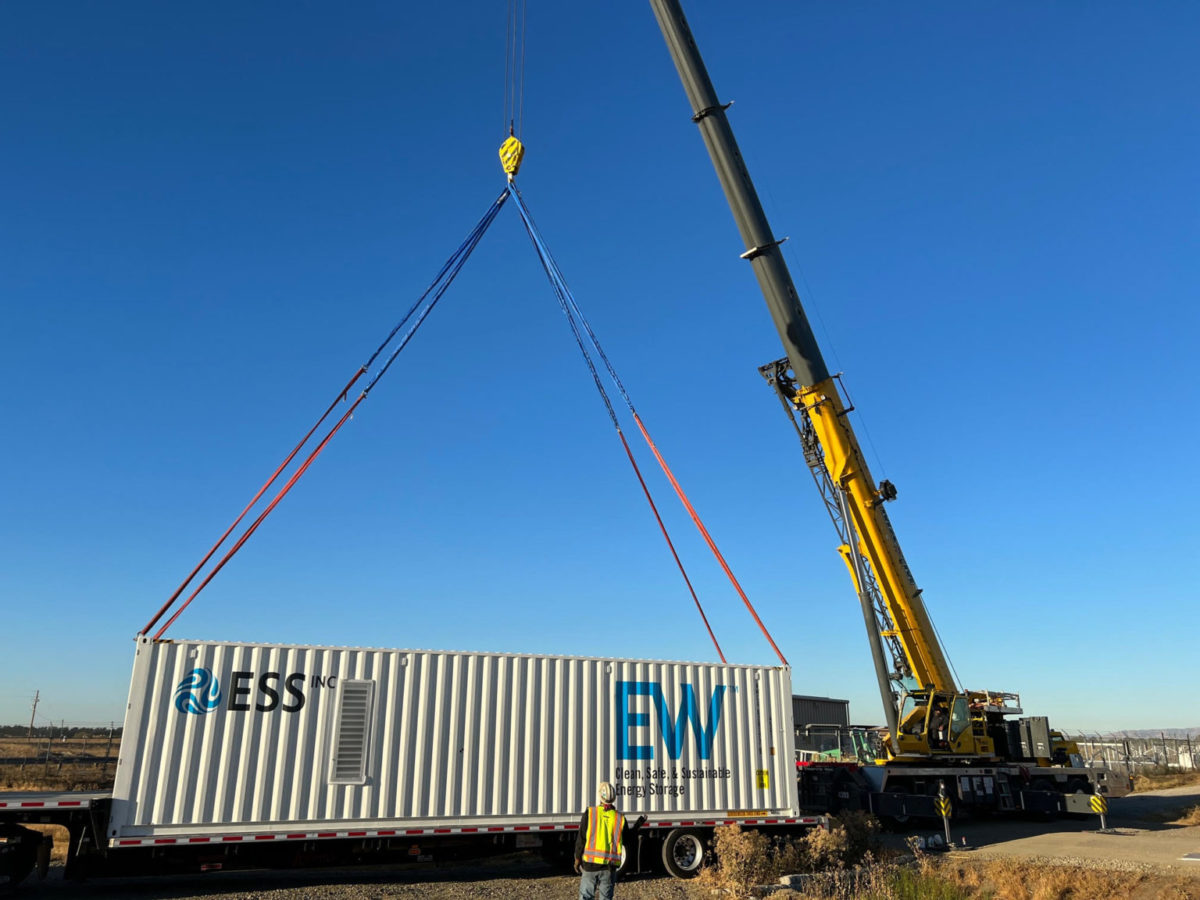From pv magazine USA
Utility-scale and commercial long-duration flow battery manufacturer ESS Inc. announced its iron flow batteries are being deployed by San Diego Gas & Electric (SDG&E) in a microgrid project aimed at bolstering energy resilience and providing critical backup power to a fire-prone town in southern California.
The microgrid is planned to integrate an on-site solar array and is designed to provide backup power to several critical community facilities, including a health center, fire station, and key telecommunications equipment. When the microgrid is not in use, excess energy stored in the flow batteries will be exported to the California wholesale energy market. The project is pegged for activation in the first quarter of 2022.
A flow battery design is comprised of an electrochemical cell where a membrane separates two chemical solutions. Chemical energy and electricity are produced by exchanging ions across the membrane.
ESS said its iron-flow batteries have a chemistry that lasts 20 years or more with no capacity fade or degradation. This differs from conventional battery chemistries, which generally achieve a 7-to-10-year lifecycle before the need for augmentation. The batteries use earth-abundant iron, salt and water for electrolyte, foregoing the use of rare minerals like vanadium and lithium, which have some environmental concerns in their extraction processes.
ESS flow batteries present no fire, chemical or explosive risk, which means they can be deployed without suppression equipment, secondary containment, or hazmat restrictions. The company said its batteries, which range from 6-12 hours durations, can offer among the lowest levelized cost of storage (LCOS) available for battery energy storage.

Microgrid-based energy resilience projects are on the rise in tandem with the rise of extreme weather events and climate-driven catastrophes like the wildfires of California. The U.S. Department of Energy reports 575 active microgrids with a combined capacity of 4.25 GW.
Long-duration energy storage has also come under focus as more renewable energy is interconnected with the grid. The Long-Duration Energy Storage (LDES) council was launched at the international COP26 climate summit this November. The council said it plans to guide governments and grid operators on how LDES technologies will support decarbonization of the grid as the lowest-cost option to society.
Between 85 and 140 terawatt-hours of LDES deployment will be required to achieve a net-zero grid by 2040, according to the council’s projections. The council also estimates a need of 1 TWh of LDES deployment by 2025 to pace for decarbonization by 2040, as well.
The LDES Council comprises 24 tech companies, users, and investors. ESS CEO Eric Dressselhuys entered the council as a founding member.
These deployment projections would entail a $1.5 to $3 trillion investment. The council said renewable energy stored in these technologies could eliminate 1.5 to 2.3 Gigatons of carbon dioxide emissions, or about 10-15% of global power emissions.
This content is protected by copyright and may not be reused. If you want to cooperate with us and would like to reuse some of our content, please contact: editors@pv-magazine.com.




By submitting this form you agree to pv magazine using your data for the purposes of publishing your comment.
Your personal data will only be disclosed or otherwise transmitted to third parties for the purposes of spam filtering or if this is necessary for technical maintenance of the website. Any other transfer to third parties will not take place unless this is justified on the basis of applicable data protection regulations or if pv magazine is legally obliged to do so.
You may revoke this consent at any time with effect for the future, in which case your personal data will be deleted immediately. Otherwise, your data will be deleted if pv magazine has processed your request or the purpose of data storage is fulfilled.
Further information on data privacy can be found in our Data Protection Policy.